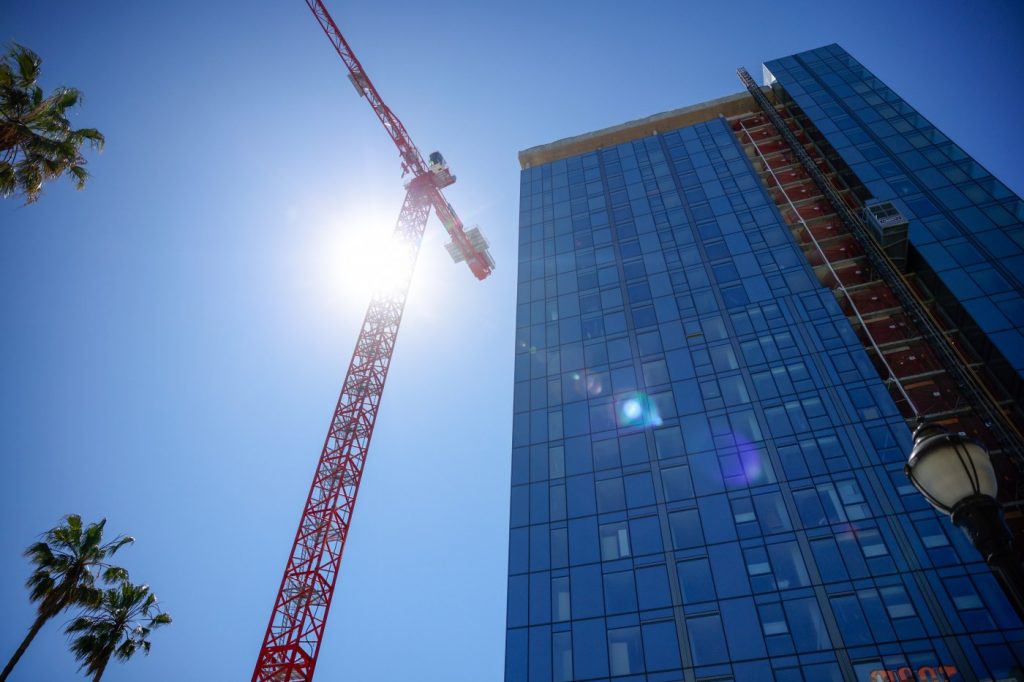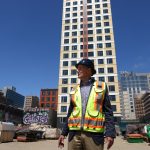Following two years of steady growth, housing construction across the Bay Area dipped in 2023, as developers reckoned with the increased costs of borrowing, labor and building materials.
Permits in the five-county Bay Area were down last year, dropping 10% to 16,535 from 18,457 the year prior, according to data from California’s housing department.
Here are five charts that explain the slowdown in construction in the Bay Area — which cities are building the most, how much of the new housing is affordable, and where the Bay Area is at in achieving its housing goals.
1. San Jose, San Francisco are permitting the most new housing
San Jose led the Bay Area in housing production — in 2023, it permitted 3,104 units of housing. It was followed by San Francisco, with 3,055 permits, and Santa Rosa, with 1,708.
But smaller cities are lagging behind in their housing goals. Of the 102 jurisdictions in the nine-county region, 40 issued fewer than 50 building permits.
A handful of small cities — Foster City, Albany, Sausalito and Hercules — issued fewer than 10 building permits, and they were only for accessory dwelling units, also known as mother-in-law cottages.
2. The Bay Area is already behind on its housing goals
Every eight years, the state’s housing department determines a certain number of homes that a jurisdiction must build in that timeframe, based on population and job growth trends. Bay Area cities and counties’ eight-year cycle began on January 31, 2023 and goes through January 31, 2031.
That number — called the Regional Housing Needs Allocation — is divided into four categories:
Very-low-income housing that would be affordable for people making less than half of the area’s median income
Low-income housing for people making 51-80% of median income
Moderate-income housing for people making 81-120% of median income
Above-moderate-income housing for people making more than 120% of median income
The median household income in the Bay Area was $115,321 as of 2022.
3. Alameda County completed the most homes in 2023 — though most of them are market-rate
Alameda County led the way in home construction in 2023, completing a total of 5,586 units, with most of them aimed at households making above-moderate income.
Meanwhile, Santa Clara County permitted more units — which means construction there could surpass Alameda County in 2024, if all those units are built.
4. The decline in construction is driven mostly by a slowdown in multifamily construction
Multifamily developers are having some of the most trouble finding financing for their buildings, driven in part by rising costs and stagnant rents. Meanwhile, construction of accessory dwelling units, known as ADU’s or mother-in-law cottages, has remained steady over the last three years.
5. Building low-income housing costs an average of $817,000 per unit in the Bay Area.
Of the 440,000 units the state expects to see the nine-county Bay Area build by 2031, 180,000 are expected to be “affordable” — targeted at low-income and very-low-income households.
Already, the region has over 40,000 affordable units in the construction pipeline that could be built as soon as they get financing, according to a recent report from the affordable housing financing group Enterprise Community Partners and the Bay Area Housing Financing Authority, known as BAHFA.
But building affordable housing is expensive — often even more than market-rate housing. Affordable housing units in the Bay Area require an average subsidy of $286,000 per unit. Construction is most expensive in San Mateo county, where they can cost an average of $825,000 per unit.


